- Home
- About us
- Products
- Dealer Enquiry
- Blog
- Contact Us
- Home
- About us
- Products
- Dealer Enquiry
- Contact Us
- 044 -2486 1994
- +91 99623 98222
- sales@nantech.in
- REQUEST A QUOTE

Harmonics are one of the biggest challenges in modern electrical systems, affecting power quality. The presence of harmonics leads to issues like:
To tackle these problems, Active Harmonic Filters (AHFs) have emerged as an effective and reliable solution.
AHFs:
This blog explores the most common types of active harmonic filters used, how they work, and the factors influencing their selection.
Here are the most widely used active harmonic filter types across commercial, industrial, and utility applications:
The most common type of AHF used for commercial and industrial applications. These filters operate by injecting harmonic currents that have equal magnitude but are opposite in phase to the harmonic currents produced by the non-linear load to which they are connected.
Shunt AHFs constantly measure the load current, extract the harmonic components via signal processing algorithms, and produce the necessary compensating current using power electronic converters. They commonly employ Insulated Gate Bipolar Transistors (IGBTs) or other fast-switching devices to ensure accurate current injection.
Shunt AHFs are ideal for applications where there are multiple non-linear loads or when the load conditions change significantly throughout the day. They are typically used for manufacturing facilities, hospitals, data centres, and any type of commercial building where variable frequency drives and other power electronic devices create harmonic distortion.
Also Read: How Does an Active Harmonic Filter Work: A Detailed Exploration
Not as widely used as shunt filters. These filters are particularly suited for applications where voltage harmonics are the main/primary issue.
Series AHFs measure the supply voltage, detect harmonic components, and inject compensating voltages to make sure a clean sinusoidal voltage is delivered to the load. They are especially effective in isolating critical sensitive loads that may experience voltage distortion from the utility supply or other loads on a shared electrical system.
The primary challenge with series AHFs is that they must carry the full load current. They are ideal for medium-power applications that demand precise voltage quality.
Utilise both active and passive filtering technologies in order to leverage the benefits of both while reducing the drawbacks of each approach. This hybrid combination provides an economical approach to harmonic mitigation for applications with high power.
Hybrid filters are especially popular in heavy industrial applications where harmonic currents are high/significant and economic considerations are a concern.
Represent a sophisticated topology that utilises multiple voltage levels to synthesise the compensating current waveform. Rather than switching between two voltage levels — positive and negative DC bus — these filters can switch between three or more voltage levels.
The typical configurations include — cascaded H-bridge converters and three-level neutral point clamped (NPC) converters. Multi-level topologies are being increasingly used in medium-voltage applications where standard two-level converters may fall short.
A collection of smaller filter units that can be assembled together to achieve the required compensation capacity — providing benefits in terms of both scalability and redundancy.
Modular designs have become popular in hospitals, data centres, and mission-critical facilities where system availability is paramount. If one module fails, the remaining modules remain operational — ensuring power quality management continues uninterrupted.
Up next — key aspects that guide AHF selection.
Generally, shunt active filters or hybrid active filters are preferred due to their scalability, enhanced performance, and affordability. Therefore, selecting the right filter is not just a technical choice but a strategic investment tailored to your specific operational and financial goals.
Ultimately, matching the active harmonic filter types to your specific business risk enables you to effectively transform a capital expenditure into a predictable profit driver, offering tangible financial security and long-term savings.
At Nantech Power Systems Pvt. Ltd — one of the leading UPS manufacturers in Chennai — we help you secure your power supply with effective active harmonic filters. Connect with us today for expert consultation tailored to your needs!
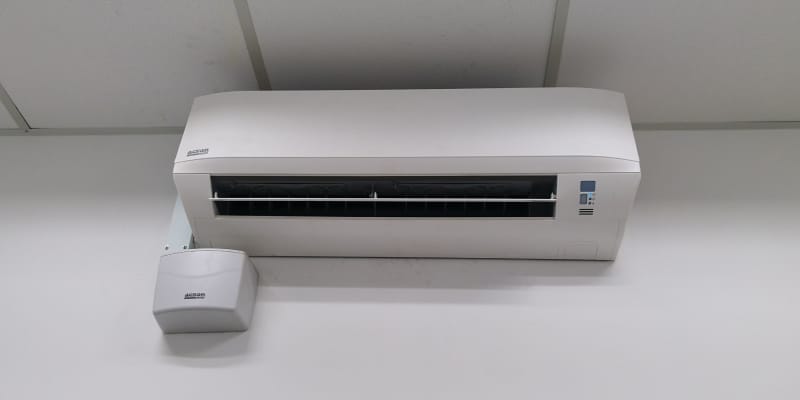
Living in India without an air conditioner (AC) may seem like a not-so-impossible task— but only until you experience the relentless heat and humidity of a typically hot day in our tropical country. It’s been ages since the AC became more of a necessity than a luxury appliance. However, the common question that arises when purchasing an AC is this: Why does an AC need a stabiliser? Of course, your AC needs a stabiliser.
If you are considering buying an AC stabiliser in Chennai, Nantech provides dependable solutions for appliance protection and efficiency.
This article helps you understand the role of a stabiliser in safeguarding your AC unit and regulating electricity consumption. Let’s begin.
It is an important device that keeps a steady voltage output from the main power supply to any connected device — such as an AC, refrigerator, or television. It ensures that the voltage remains constant to avoid power failures that could damage the appliance's internal components.
Naturally, the question arises: Do we need a stabiliser for ACs?
Let’s get one fact straight: A stabiliser’s prime task is to maintain a steady voltage supply to your AC, keeping it safe from fluctuations. Although it will not directly minimise your electricity consumption, it can indirectly help you save money by:
Investing in a stabiliser may not immediately reduce your monthly EB bills. However, its impact on efficiency and savings can be significant over time.
Of course, you can, as long as you have a consistent and stable power supply and minimum to nil voltage fluctuations. Most modern ACs — especially the inverter models — come with built-in voltage regulators, allowing them to handle minor variations. Larger fluctuations, however, can cause havoc on your AC’s delicate components, compressor, and motor, leading to quicker deterioration and poor efficacy.
When is a stabiliser really essential for your AC?
In a nutshell, your stabiliser transforms into a crucial protector and ensures steady voltage to keep your AC operating at optimum temperature.
Also Read: Servo Voltage Stabilizers: - Air-Cooled vs Oil-Cooled
Yes, it can, but indirectly, by improving your appliance efficacy and minimising energy wastage caused by voltage fluctuations. By ensuring a stable power supply, the stabiliser keeps your AC and other appliances operating as intended, resulting in low energy consumption compared to conditions of unstable voltage. This not only leads to cost savings on electricity bills but also mitigates potential repair expenses.
While a stabiliser does not cut power bills instantly, it performs the quiet yet important task of keeping your AC and other appliances energy-efficient.
Ensuring a steady supply of power, it:
Now we shall go through the major ways in which a stabiliser helps reduce energy consumption and long-term costs.
So, while it doesn't reduce your monthly power bill by a certain percentage, it does improve the overall efficiency of the AC and saves you on potential repair costs, which can be significant.
Yes, it most certainly will consume a small amount of electricity even when your AC is not running. This small consumption of energy is called standby power or vampire power.
So how does this happen? Stabilisers have internal circuits to monitor incoming voltage when the main outlet is switched on, but the appliance is not running. This circuit draws a minimal amount of energy, which usually amounts to a few watts.
This vampire power consumption from a single AC may be negligible. However, the combined consumption of multiple units can add up to a sizeable bill amount. The only way to avoid this extra power usage is to unplug or switch off the stabiliser from the wall socket.
Under ideal conditions and proper maintenance, a good-quality AC stabiliser will last for 5–10 years. The lesser the quality, the shorter the lifespan. The durability of an air conditioner stabiliser is governed by several factors, such as:
Replace your stabiliser when it emits noises or causes frequent tripping. If you notice erratic behaviour, strange noises, or frequent tripping, it might be a sign that your stabiliser is nearing the end of its life and needs replacement.
Do not take chances with your air conditioner, especially if your locality is prone to voltage fluctuations. This small investment will ensure the safety of your appliance and prevent unsafe incidents that can end in unwante0d expenses. Of course, a stabiliser may not make a significant difference to your electricity bills, but it will most definitely enhance your AC’s performance for years to come.
Looking for a reliable source to purchase your AC stabilisers? Connect with Nantech Power Systems Pvt. Ltd today — one of Chennai’s leading UPS manufacturers and dealers.
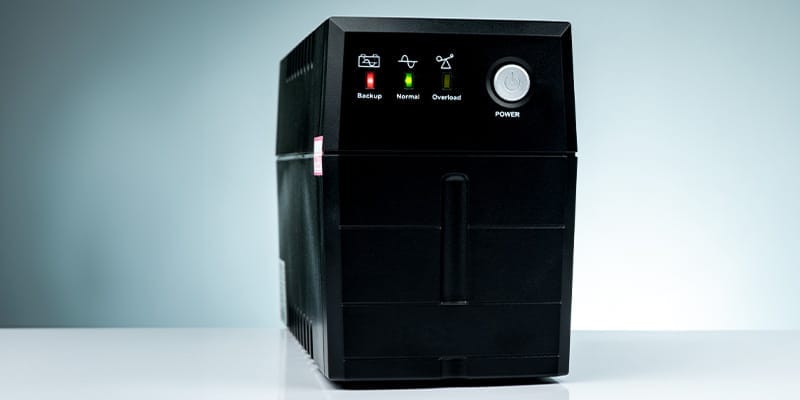
A UPS (Uninterruptible Power Supply) is essential because it safeguards computers from sudden power disruptions. Without this protection, outages can lead to serious risks — ranging from data loss and operational downtime to safety hazards in sensitive environments.
It provides:
Nantech Power Systems Pvt. Ltd. provides reliable UPS in Chennai — protecting critical systems and outperforming generators during sudden power disruptions.
This article strips away the technical jargon to reveal the critical scenarios where UPS solutions demonstrate their strategic value.
Knowing why you need UPS power supply for computers is more than just a technical concern — unlike a generator that requires time to start up, a UPS switches to its internal battery in milliseconds. This instant response provides a crucial window of 5–60+ minutes of power during a complete blackout.
So, how long will a UPS power my computer?
UPS backup time depends on three main factors:
Generally, a fully charged UPS can keep devices running anywhere from a few minutes up to several hours, depending on the model and usage — giving you the time needed to save your work and perform a safe shutdown of your equipment, and thereby preventing catastrophic data loss and hardware damage.
The consequences of a sudden power outage can be severe. This is more than just a minor inconvenience. An abrupt shutdown can lead to:
A UPS protects against these issues using two key components:
This seamless protection is precisely why you need a UPS for your computer. While basic surge protectors may guard against spikes, they offer zero defence against a total loss of power. A UPS ensures business continuity, safeguarding your critical operations against the frequent voltage instability.
Now that we have established how a UPS provides essential defence against blackouts, we can explore how it handles other subtle but equally damaging power problems.
Many business owners operate under the false confidence that surge protectors provide ironclad security for computers. But this raises the question: why you need UPS for computers rather than relying solely on a surge protector?
While standard surge protectors effectively block catastrophic electrical jolts, they remain utterly useless against the most frequent hardware attackers:
Thus, a UPS acts as a continuous filtration system: Its Automatic Voltage Regulation (AVR) actively monitors current flow, keeping output within the safe 220–240V range, whether input dips to 170V or peaks at 260V. This eliminates premature component failure and random system behaviour caused by unstable power.
We'll next dissect how strategic UPS deployments prevent costly operational disasters during routine voltage fluctuations.
Also Read: Why is UPS Maintenance Important?
A UPS plays a critical role in business continuity, acting as a sound investment with tangible ROI. By preventing unexpected shutdowns, it safeguards your professional reputation and ensures crucial workflow isn't interrupted.
A UPS provides emergency power not only for your computer but also for vital peripheral devices such as routers and external drives. This essential protection means you can continue working through brief power outages, meeting deadlines and maintaining client trust.
Also, many people ask — “Are UPS systems compatible with gaming PCs?”
Yes, UPS systems are compatible with gaming PCs. For the best performance, pure sine wave UPS units are recommended, as they deliver stable and clean power ideally suited for sensitive, high-performance systems. Many mid-range and premium models — including APC — are designed to support gaming rigs effectively.
In today's digital landscape, proactive protection is non-negotiable. Investing in a UPS directly mitigates these risks, preventing costly downtime and protecting your operational integrity.
Beyond core systems, a UPS ensures comprehensive protection for your entire digital setup, effectively creating a “digital fortress”. This holistic approach is vital for maintaining system reliability.
Next, let’s look at selecting the right UPS.
Wondering, “What size UPS do I need for my computer?” To choose the right UPS size for your PC, first estimate your system’s power consumption in volt-amperes (VA). It is best to add a safety margin of about 20–30% above this number to handle fluctuations or future upgrades. As a general guideline, most home PCs run well on a 1000VA–1500VA UPS, while high-performance or gaming setups may require models of 1500VA or more.
However, to navigate the UPS selection process effectively for businesses, consider this three-pronged approach focused on your specific operational requirements:
For example, if your setup draws 800 watts, your chosen unit should maintain a load capacity exceeding this total — ideally by 20% — to accommodate unexpected additions.
Finally, transition from selection to long-term preservation and battery health:
A UPS isn’t an optional accessory; it is a fundamental prerequisite for your professional setup. It provides robust hardware protection and ensures data integrity during unexpected outages. This consistent power flows directly into sustained productivity, preventing costly operational downtime. Adopting this safeguard as a business continuity strategy preserves your technology, reputation, and peace of mind.
This is where trusted UPS manufacturers and dealers, like Nantech Power Systems Pvt. Ltd., Chennai, come into play. Secure your digital fortress — contact us today to find the right UPS for your needs!

Modern businesses face significant risks from power outages and voltage fluctuations, often leading to data loss and equipment damage. An Uninterruptible Power Supply (UPS) is therefore vital for maintaining business continuity.
Why is APC a trusted brand for UPS systems?
As a global leader, American Power Conversion Corporation (APC) by Schneider Electric offers decades of innovation in robust power protection. APC UPSs are dependable, feature-rich, and performance-oriented, making them a complete solution for varied business requirements.
They offer:
This article explains why APC UPS systems are the best choice for businesses. We'll examine the:
The APC has built an enduring reputation over the decades as a leading provider of reliable power protection solutions, thanks to three core strengths:
These are qualities that collectively meet business continuity demands.
Besides, APC UPS units are meticulously engineered to shield your sensitive electronic equipment and crucial operations from a wide spectrum of power problems, including:
Global enterprises, ranging from multinational banks to cloud infrastructure providers, now rely on APC systems to maintain operational continuity, underscoring APC's widespread customer satisfaction. These systems deliver proven protection through:
Choosing an APC system means more than installing power backup hardware; it secures your organisation's lifeline against unpredictable power conditions while empowering strategic infrastructure growth, precisely what our next section addresses through their advanced management ecosystem.
Also Read: Know How To Buy The Right UPS!
Advanced APC UPS systems distinguish themselves through purpose-built technologies that directly answer contemporary IT management challenges. This brings us to the essential question: What are the key features of APC Smart-UPS?
Their intelligent design philosophy delivers three vital outcomes:
Every APC UPS power supply unit comes with:
Beyond operational assurance, these innovations enable strategic advantages we'll explore next through long-term financial modelling.
Building upon their proven technological resilience, APC UPS systems deliver long-term strategic value that transcends ordinary equipment purchases.
Furthermore, APC offers a diverse array of UPS systems with varying capacities, ensuring that all businesses—from small offices to large data centres—can find solutions that precisely match their power protection requirements and expansion plans.
These systems are engineered to:
They offer line-interactive, online double-conversion, and modular UPS systems to effectively address diverse business needs.
Therefore, rather than viewing this as mere infrastructure spending, organisations achieve operational cost-effectiveness through TCO (Total Cost of Ownership) optimisation, a crucial factor influencing both IT and procurement decisions.
Furthermore, the superior energy efficiency, including high-efficiency power conditioning, inherent in APC UPS systems, demonstrates tangible returns on your strategic investment. This long-term value is further reinforced by APC UPS’s role as a strategic partner—a role we’ll explore next.
Beyond safeguarding your operations through technical excellence, APC demonstrates why APC UPS are best for business through strategic partnership commitments extending far beyond product delivery.
This collaborative approach manifests most visibly through their:
Collectively, APC's partnership ecosystem of adaptive support frameworks, application-spanning versatility, and certified reliability conclusively positions their solutions as essential drivers for operational resilience, answering beyond doubt why APC Smart-UPS are best for business in strategic continuity planning.
APC UPS systems deliver mission-critical reliability and advanced technology through features like self-healing battery arrays and patented surge suppression technologies, protecting servers, PBX systems, and IoT devices from volatile grid realities.
Complementing this technical bedrock lie compelling TCO advantages: modular scalability considerably reduces expansion costs, whilst high energy efficiency slashes thermal management expenditure, validated by substantial annual savings.
Such multilayered value makes APC power outage solutions indispensable for:
For enterprises seeking a reliable UPS in Chennai, partnering with Nantech Power Systems Pvt. Ltd—the APC authorised dealer—becomes your final strategic layer. Make this smart choice to ensure your business continuity and gain peace of mind, knowing your operations are powered by the best.
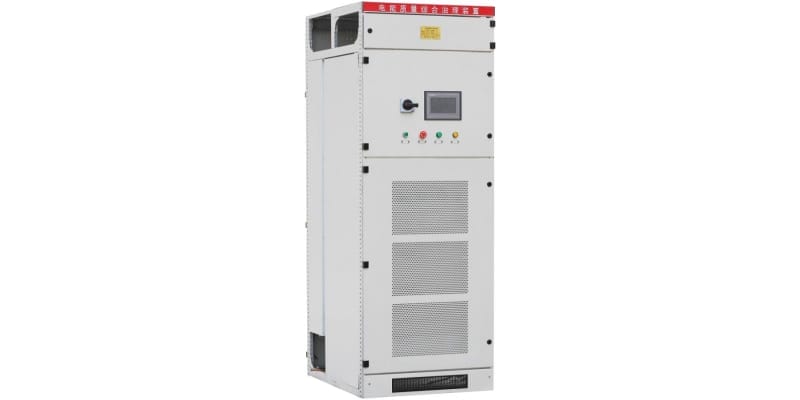
In today's complex electrical landscape, the consistent delivery of clean and reliable power is not just an advantage; it's fundamental to operational success. Active Harmonic Filters (AHFs) have distinguished themselves as intelligent solutions, adeptly addressing modern power quality challenges and offering engineers real-time protection they can depend on.
By the conclusion of this guide, you will possess a clear understanding of why specifying AHFs becomes essential when THD (Total Harmonic Distortion) mitigation is mission-critical. This is particularly important for achieving effective power factor correction in your power management strategy and for preserving the integrity of your electrical voltage waveforms.
Harmonics are like the extra or unwanted frequencies that combine with the main frequency of an electrical signal. They occur when the current or voltage waveform is not a smooth sine wave.
This harmonic distortion occurs due to the pervasive use of non-linear loads in your electrical systems, such as:
During harmonic distortion, you may encounter specific negative impacts, such as:
Furthermore, high harmonic distortion impacts your true power factor. Your existing power factor correction capacitors may become ineffective or even be damaged by these harmonics, potentially leading to utility penalties and higher electricity bills, especially if your facility operates under kVAh billing.
Understanding how AHFs operate involves exploring their core principles, detailed operation, and essential components. Let’s break down these elements to see how they work together for effective harmonic mitigation.
Harmonic distortions in electrical systems can cause voltage fluctuations or lead to the overheating of equipment. An Active Harmonic Filter (AHF)—an electronic device—plays a significant role in mitigating such destructive harmonic distortions by detecting and neutralising them as and when they occur.
The AHF works based on a highly effective principle—detect and cancel. The device continuously monitors the electrical system in real-time and identifies unwanted harmonic currents generated by non-linear loads. Once detected, it generates equal and opposite (180° phase-shifted) currents that effectively cancel out the unwanted harmonics.
This dynamic cancellation neutralises existing harmonics and adapts to changing load conditions instantly, ensuring consistent power quality. Unlike traditional passive filters that target specific frequencies, AHFs offer broad-spectrum harmonic mitigation with real-time adaptability.
Also Read: What Are Active Harmonic Filters And Its Application?
You need to analyse their dynamic four-stage operational cycle to fully understand how active harmonic filter works and combats pervasive harmonic distortion.
At the heart of every effective AHF solution lies surgical-precision diagnostics. High-fidelity Current Transformers (CTs) are strategically clamped onto your power cables, particularly in three-phase systems, capturing real-time current data at impressive rates, often exceeding 512 samples per cycle. They meticulously track their specific magnitude and phase relationships.
Once the harmonic signature is captured, the AHF's DSP controller (digital signal processing) instantly transforms into your electrical system's analytical brain.
Advanced signal processing algorithms meticulously cross-reference the measured harmonic data against your facility’s nominal voltage and existing power factors. This enables the precise calculation of the compensation current required to counteract each problematic harmonic component.
This mathematical inversion flips the harmonic phase angles to be exactly 180 degrees out of sync.
With the blueprint for correction defined, your AHF activates its power electronic stage through industrial-strength hardware. The system has an IGBT or Insulated-Gate Bipolar Transistor-based inverter bridge. This device, which is rated for demanding loads like 480VAC @ 600A, executes sophisticated Pulse Width Modulation (PWM) techniques, such as Space Vector Pulse Width Modulation (SVPWM).
This process rapidly transforms energy from its internal DC bus energy storage into precisely calibrated cancellation currents.
In this final phase, theory dynamically transforms into protective action through your AHF's closed-loop power amplifier system. High-density injection transformers, or sometimes direct connections, carefully feed the generated corrective current directly into your AC lines.
This action neutralises the disruptive harmonics at their very source of propagation. The system’s rapid refresh cycle, often around 10 kHz, facilitates what electrical engineers term “dynamic impedance adjustment”. This allows the AHF to automatically compensate for constantly varying loads from your diverse equipment, such as VFD motors, SMPS units, or battery chargers.
Each AHF has hardware and software components working in perfect synchronisation. Here’s a list of the elements and their functions:
These components ensure accurate and efficient harmonic compensation for optimal power quality, leading us to explore the key benefits of using AHFs.
The technical advantages of AHFs manifest in measurable operational improvements. These precise filters are effective tools for improving power quality in electrical systems. They work using a closed-loop control mechanism, which allows them to precisely remove unwanted harmonics. Here are the main benefits of AHFs:
As the demand for cleaner and more reliable electricity continues to rise, the importance of AHFs in maintaining power quality and system stability grows significantly.
You've seen that AHFs are key to managing harmonic distortion and ensuring superior power quality. These devices are used in commercial and industrial facilities, renewable energy installations, and data centres.
This intelligent harmonic mitigation boosts efficiency, extends equipment life, and safeguards system reliability.
At Nantech Power Systems Pvt. Ltd, one of the leading UPS manufacturers in Chennai, we offer expertly tailored AHF systems combined with our proven UPS technology. Contact our technicians today to explore these solutions and secure your free power consultation!

There are critical structural components underpinning modern data centres that extend well beyond simple storage. Server rack cabinets are fundamental to organising, protecting, and managing core IT infrastructure. Although often overlooked, the meticulous selection process for these units is vital. It requires careful consideration of factors ranging from thermal management and spatial constraints to security protocols, ensuring alignment with both current demands and future scalability.
Knowing how to select smart integrated data centre solutions is highly crucial—an unsuitable cabinet can directly compromise operational effectiveness, leading to issues such as restricted airflow, inadequate load support, or difficult equipment access, which may shorten hardware lifespan and increase running costs.
This guide examines precisely the essential considerations for selecting the right data centre rack cabinets. It focuses on balancing immediate functional requirements with adaptability for evolving technological landscapes, ultimately supporting resilient and efficient data centre operations.
When exploring how to select data centre rack cabinet solutions, you’ll encounter two main types:
1. Open Frame Racks
2. Closed Frame Racks/Cabinets
However, exposed cabling can be messy and is at risk of damage. Vulnerability to unauthorised access and dust protection issues, leading to overheating, are key drawbacks with open frame racks.
Within closed cabinets, you'll find standard options and high-density versions, with the latter engineered explicitly for heavier loads and enhanced cooling systems needed for high-performance computing.
Other common types of data centre rack cabinets include:
Knowing these types prepares you for the next step: assessing dimensions and load capacity for your specific needs when deciding how to select data centre rack cabinets.
If you're serious about choosing data centre racks that stand the test of time, height, width, and depth become your essential trinity of considerations—and here's why. Think about height measured in Rack Units (‘U’), where 1U equals 1.75 inches in height. Planning height isn’t just about fitting/stuffing current IT equipment; it’s vital to leave buffer space. Proper future planning makes all the difference!
Now let's tackle the practicality of selecting data centre rack cabinets:
Before finalising, run through this internal checklist:
Nailing the size and capacity creates a solid foundation for your infrastructure. Next up, we delve into how these physical choices directly influence effective cooling and airflow management—a vital aspect of data centre efficiency.
Also Read: Why the UPS is the Heart of a Data Centre Power System!
Ventilation and thermal regulation are the foundation of sustained hardware functionality. Maintaining consistent temperatures:
Therefore, opt for:
Give these simple additions your utmost attention instead of overlooking them; they prevent the detrimental mixing of hot and cold air streams, directly reinforcing your chosen cooling approach, such as hot-aisle/cold-aisle containment.
Having addressed thermal management strategies, let's now turn our attention to the crucial aspects of cable management and security.
There's no denying that effective cable management forms the backbone of smooth data centre operations. Properly organised systems not only ensure optimal airflow but also prevent frustrating maintenance scenarios down the line.
When your cables are neatly arranged using vertical or horizontal managers and other accessories, airflow isn't restricted, and technicians can access equipment without wrestling with tangled cables. Moreover, the physical dimensions chosen for the rack, particularly rack width and depth, directly influence the space available for effective routing using these accessories.
Let's briefly explore why prioritising this is essential:
To achieve effective cable management, consider these practices:
Furthermore, robust security is paramount, particularly with closed frame racks. These units inherently offer better protection than open frames:
Having addressed the crucial roles of cable management and security, our focus now shifts to integrating power distribution units effectively within your chosen cabinet.
We've systematically explored essential factors such as:
These aspects form the structural foundation of any efficient data centre operation.
Choosing cabinets isn't just about aesthetics. It's a strategic alignment balancing operational priorities, security, resilience, and scalability/future planning. A well-considered selection process:
Procurement teams benefit significantly from this systematic approach, methodically matching specifications to operational needs. This reduces ambiguity and ensures the selected cabinets effectively support both current demands and future data centre strategies.
Need tailored guidance on integrating UPS in Chennai? At Nantech Power Systems Pvt. Ltd, Chennai, we align your specific infrastructure needs with reliable power strategies that support long-term performance. Our specialists help you integrate the right power backup system that prioritises energy efficiency and operational continuity.
Connect with us today to explore the most effective UPS integration approach for your data centre.
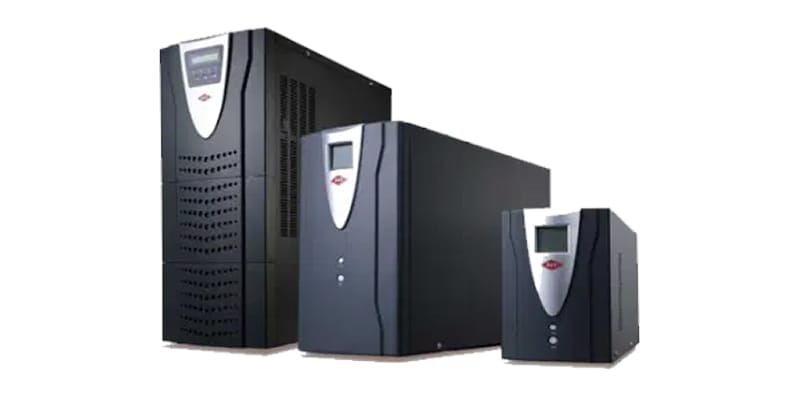
In today's infrastructure landscape, Uninterruptible Power Supply (UPS) systems safeguard operations by delivering backup power during outages.
Modular UPS and conventional UPS represent two distinct methodologies for achieving this. Unlike traditional systems, modular UPS allows capacity adjustments via scalable modules, while conventional UPS architectures rely on fixed designs.
Choosing between the two UPS options directly impacts:
Both systems address unique market needs, with modular UPS excelling in dynamic environments and conventional UPS suiting smaller installations.
Understanding these differences is crucial for making informed decisions. Nantech, a leading provider of UPS in Chennai, offers comprehensive solutions for all your UPS needs.
Ready to dive deeper? Let's dissect the structural distinctions between these power solutions in this section.
Modular UPS systems employ individual, hot-swappable power modules, enabling seamless scalability while maintaining operational continuity. This architecture allows users to add or replace hot-swappable components without disrupting power flows.
Conventional UPS systems, in contrast, function as monolithic units with fixed capacities that lack inherent redundancy. Their central power paths create single points of failure, demanding complete shutdowns for maintenance procedures, such as rectifier or inverter replacements.
Also Read: Uncovering the Game-Changing Benefits of Modular UPS Systems
The core components of modular UPS include:
The core components of conventional UPS include:
With the fundamental structural differences between modular and conventional UPS architectures clarified, let’s next analyse their differences in operational adaptability in fluctuating power scenarios and scalability.
Modular UPS technology allows operators to seamlessly expand capacity through additional power modules. This scalability eliminates wasteful overprovisioning while aligning costs to actual load demands. Contrariwise, conventional UPS’s rigid infrastructure presents inherent bottlenecks. Their static capacities force purchasers to overspend on unused capacity early, while upgrades mandate costly downtime for complete unit swaps.
Furthermore, modular UPS’s compact design addresses critical space constraints in data centres. They vertically integrate components—enabling efficient deployment in infrastructure-cramped environments—whereas conventional UPS models demand dedicated floor space.
With their ability to scale and optimise space usage, modular UPS systems’ advantages in adaptability and flexibility become undeniable.
Modular UPS designs offer built-in N+1 redundancy: if one power module fails, others seamlessly compensate while maintaining full load capacity. This self-healing capability keeps facilities operational even during partial subsystem failures.
Conventional UPS systems, on the other hand, follow a riskier paradigm. Some incorporate basic redundancy measures, but critical component failures often precipitate complete shutdowns. Why does this matter? Conventional solutions require external backups like diesel generators, introducing unnecessary complexity and higher lifecycle costs for equivalent protection.
While conventional systems demand large capital investments and cumbersome backup layers, modular approaches deliver intelligent redundancy. Uptime optimisation here translates directly to business continuity assurance for data centres and critical infrastructure.
In mission-critical environments, operational continuity hinges on efficient maintenance protocols. Modular UPS systems redefine this benchmark through inherent serviceability advantages. With hot-swappable modules, engineers seamlessly remove/replace failed components mid-operation, eradicating downtime during repairs. Contrast this with conventional UPS maintenance, which often necessitates full shutdowns.
When comparing “modular UPS vs. conventional UPS” solutions, the ability to perform component-level upgrades extends equipment lifespan while reducing waste—critical factors for ESG-driven infrastructure strategies. As power requirements grow increasingly dynamic, aligning UPS architectures with operational priorities becomes essential for risk management.
Ultimately, deciding between the two UPS solutions—conventional UPS vs. modular UPS—hinges on your operational priorities, projected growth scale, and tolerance for infrastructure risk. Small business owners requiring scalable solutions thrive with adaptable modular UPS platforms, while those prioritising immediate cost reductions better suit static conventional UPS installations.
What's the golden rule? Conduct a comprehensive needs analysis with technical consultants before investing. At Nantech Power Systems Pvt. Ltd, Chennai, we translate your unique demands into durable infrastructure roadmaps. Our certified UPS engineers can help you navigate this decision with lifecycle costing models tailored to your infrastructure.
Contact us today to determine which UPS system is right for your business!
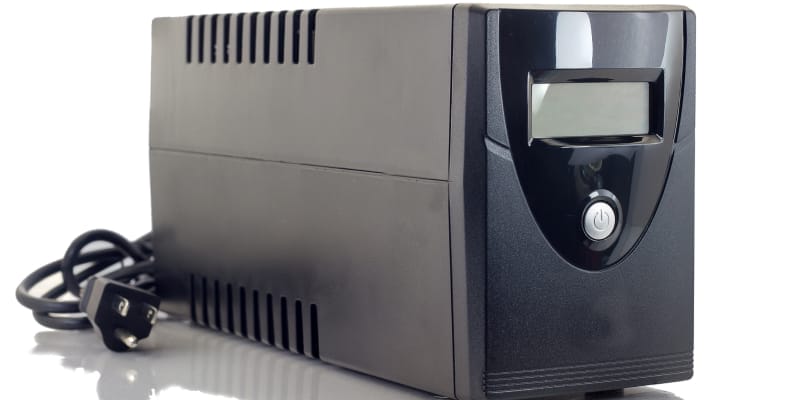
Your business thrives on steady power, especially in dynamic retail and manufacturing sectors. Modular Uninterruptible Power Supply (UPS) systems transform power management for owners seeking adaptable solutions. The advantages of modular UPS encompass energy efficiency, cost savings, and resilience against outages.
Looking for UPS in Chennai? Nantech offers premium solutions, ensuring flexibility and continuity by aligning with your diverse business needs.
As you delve deeper, you will see how adopting modular UPS can boost your operations significantly.
Modular UPS systems present a more adaptable solution for changing organisations. They can adjust as requirements evolve, unlike standard UPS systems, which are static and provide a fixed power capacity. These systems are commonly used in data centres, server rooms, and other infrastructural settings.
The essential aspects of modular UPS include:
How does a modular UPS impact your business? It maintains operations, seamlessly adapting to failures. This is not merely technical; it guarantees continuity, reducing total system failure risks.
Let us explore the modular UPS advantages:
Modular UPS systems thrive on redundancy, ensuring a module failure does not impair the whole system. These systems excel by integrating smaller UPS modules into one setup. Extra modules boost power capacity and provide a fail-safe if one fails.
The N+X redundancy model benefits small businesses. N modules support your load, plus X extra for redundancy. This ensures operations continue without interruptions, which is vital for client trust and operational integrity. Operational efficiencies extend beyond redundancy. Adding or replacing modules without disrupting the power supply makes modular UPS a wise choice for optimising power solutions.
Modular UPS systems offer lower installation and ownership costs than traditional ones. Initial investment may be higher, but efficiency, scalability, and reduced maintenance lead to savings.
They reduce energy use and bills and are designed to operate efficiently at partial loads. The pay-as-you-grow model ensures investments align with growth, enhancing ROI. As your business evolves, reliable, cost-effective power solutions that grow with you are crucial for maintaining and boosting operational efficiency.
Modular UPS systems maintain high efficiency, especially under varying loads. Traditional systems may lose efficiency at low capacity, but modular systems adapt. This saves energy and cuts costs. For instance, if you need 60–70 kVA, a modular UPS matches this, avoiding inefficiencies due to underutilisation.
Scalability is a hallmark of modular UPS, letting infrastructure grow with your business. This is crucial in developing regions, where demand changes rapidly. Adding modules for capacity or redundancy supports a pay-as-you-grow model, reducing initial investment and enabling precise power management control, minimising downtime for upgrades or maintenance.
Also Read: Know How To Buy The Right UPS!
Designed with hot-swappable modules, modular UPS systems allow replacements or upgrades without shutdowns, which is beneficial for businesses where downtime is costly. Maintenance or upgrades without interrupting the power supply enhance business continuity.
Another attraction is reliability. Modular UPS systems include redundancy, lowering the total system failure risk. Thanks to the remaining modules, the system continues operating in case of a module failure. This ensures a continuous power supply and peace of mind, knowing operations are protected against disruptions.
Modular UPS systems smartly use space better than traditional setups. Vertical expansion lets you grow power protection without more floor space. This saves real estate and creates an organised, clutter-free environment, which is vital in small facilities.
Scalable systems do not need additional infrastructure to generate more power. Instead, integrating more modules into existing frameworks lets your system evolve with needs, providing a robust solution that adapts to requirements.
Implementing a modular UPS system requires a forward-thinking approach that balances technological adaptability with cost-effective scaling. Let us examine the key strategic considerations for maximising your UPS investment.
Modular UPS systems are not just power protection but a future-proof backbone. With fast technological advances, adaptability to new technology is crucial. As your business evolves, your modular UPS can add modules or upgrades with little disruption.
This integration ensures infrastructure remains cutting-edge, supporting current operations and future expansions. This approach saves short-term money and secures long-term investment, ensuring your system grows with business needs. As you look forward, flexibility to adapt and expand is a strategic asset.
Modular UPS systems are designed for cost-effective expansion and upgrades. Unlike traditional systems needing overhauls for growth, they add modules for capacity or redundancy. This approach minimises initial investment and reduces total ownership cost over time.
Paying as you grow is a game-changer for small businesses, especially in developing regions. This model allows you to start with what you need and expand as you grow without overcommitting resources. It supports financial flexibility and ensures investment matches current needs with seamless scaling options.
For small businesses in retail and manufacturing, especially in developing regions, selecting a scalable modular UPS system for future growth is vital. Here are guidelines for informed decisions to choose a modular UPS:
Adopting a modular UPS is not just about meeting current needs. It is also about future-proofing your business operations for growth and sustainability. Adaptability, efficiency, and scalability make these systems a strong foundation for thriving amid uncertainties in retail and manufacturing in developing regions.
As Chennai's trusted modular UPS expert, Nantech Power Systems Pvt. Ltd secures your power supply and enables a smooth transition to a future where disruptions do not threaten continuity and growth. With our expertise, we provide tailored solutions as you consider power stability steps, supporting streamlined operations and uninterrupted success.
Scale your power protection as your business grows. Connect with us to explore modular UPS solutions today!
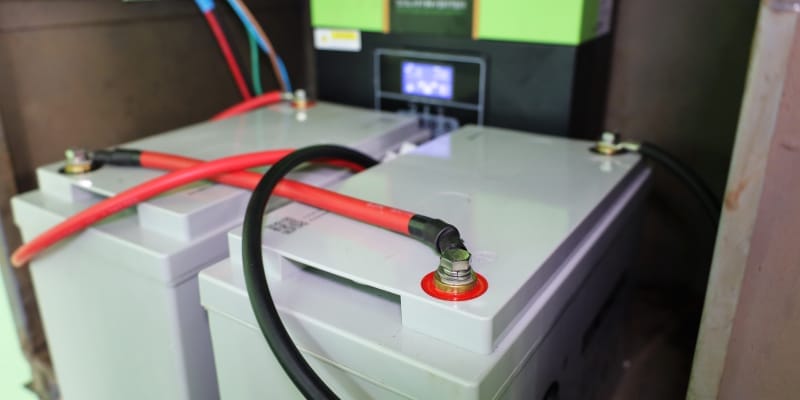
With inverter battery performance at the core of effective energy management, grasping the various elements influencing its longevity and function is essential.
This guide delves into essential considerations to help prolong the lives of inverter batteries and ensure they deliver the best performance over time. From battery types and quality to charging habits and upkeep, plus how inverter efficiency affects them all, each aspect contributes to the overall effectiveness of your power solutions. Journey with us as we uncover how to manage these components for better inverter battery performance.
Inverter batteries are available in three types and have key differences in performance and lifespan.
The DoD or Depth of Discharge indicates how much capacity has been utilised. Here’s how this parameter influences the inverter battery performance and life:
The ideal DoD levels for lead-acid batteries are up to 50%, and lithium-ion is below 80%.
Effectively managing the DoD enables businesses to ensure their inverter batteries deliver top performance and longevity, aiding eco-friendly efforts.
Extreme hot and cold temperatures significantly impact inverter battery chemistry, influencing efficiency and effectiveness.
Industry insights suggest that the optimal temperature range for inverter batteries is between 20°C and 25°C. Batteries within this range maintain their integrity, ensuring consistent performance and longevity.
For optimal temperature conditions, batteries should be placed in well-ventilated areas away from direct sunlight or severe cold. Proper ventilation ensures that excess heat generated during battery operation is effectively dispersed, preventing overheating and related risks.
Also Read: Why Do Inverter Batteries Die So Soon?
The inverter’s efficiency is pivotal in determining the health and longevity of your inverter battery. At the efficiency core is the inverter's capacity to transform DC (direct current) from the battery into usable AC (alternating current) with minimal energy loss.
High-efficiency inverters boasting conversion efficiencies of over 95% ensure most of the battery's stored energy is usable. Minimising energy loss is crucial to maximising battery runtime and, by extension, its overall performance and life.
Another essential aspect is the power factor, which indicates how effectively the inverter converts electrical power into sound work output.
Inverters with a high power factor waste less energy and put less strain on the battery, leading to better battery health over time. This efficiency ensures the battery can deliver and receive power more effectively, supporting its longevity. Efficient inverters also handle heat generation well. Excessive heat harms battery health, speeding up degradation and shortening battery life. By generating less heat, high-efficiency inverters reduce thermal stress on batteries, aiding their preservation and extending their service life.
Adhering to optimal charging practices is critical to boost the average life of an inverter battery. You should:
Overcharging leads to electrolyte loss, diminished capacity, and possible harm. It can also increase internal pressure and temperature, risking damage to the battery structure.
Undercharging leads to sulfation, where lead sulfate crystals accumulate on the battery plates. This hinders the battery's ability to charge and discharge effectively, significantly diminishing its lifespan and power delivery capability.
Advanced charge controllers are at the forefront of managing the charging process, offering numerous advantages for maintaining inverter batteries.
The following tips are essential to extending your inverter battery lifespan:
By taking a proactive stance on maintenance, you ensure your inverter battery runs at peak efficiency, supporting uninterrupted power supply and your enterprise's commitment to green practices.
Ensuring your inverter battery achieves peak performance involves more than selecting the right technology. By prioritising these aspects, you can significantly enhance the operational efficiency of your power systems, contributing to cost savings and environmental sustainability goals.
Remember, consistent maintenance and brilliant charging routines prolong your battery's life, reflecting your dedication to eco-friendly solutions. If you seek expert advice when choosing and sustainably managing your power solutions, Nantech Power Systems Pvt. Ltd, one of Chennai’s leading UPS dealers, is here to assist.
Secure your power supply and ensure efficient, reliable, and streamlined operations!
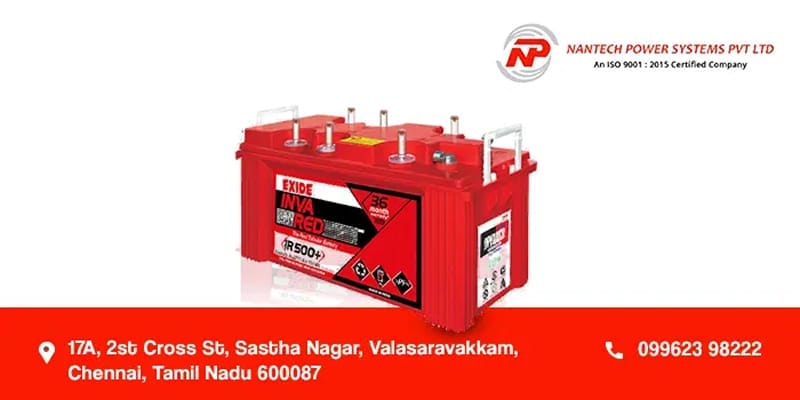
For any homeowner or business owner, an inverter battery is your vital safeguard during power outages, standing ready like a silent sentinel. However, once fully charged, a crucial question arises: What exactly should you do next?
Don't ignore this step. Being unaware of what to do when the inverter battery is fully charged can lead to premature failure of the device—a costly mistake that wastes your investment. It is crucial to keep your inverter battery well-maintained and fully charged to guarantee its efficiency and lifespan.
This guide walks you through how to confirm your inverter battery status and take the right actions—because every step holds the power to protect your investment and ensure reliable power.
The first step is to confirm the “charge level”. To do it manually, check the battery's indicator lights, as most models use an LED to signal a full charge. Typically, a solid green/blue light indicates that the charge is complete, but it is always wise to consult your owner's manual for specifics.
Fortunately, many modern inverters have a built-in display screen that provides detailed system information. This screen will often show the battery's State of Charge (SoC) as a percentage—making it easy to confirm when it reaches 100%. Some models may also notify you with a distinct “beep” once the battery is fully charged.
To confirm more precisely, you can use an external device—such as a multimeter or voltmeter—to check the battery voltage directly.
However, it is crucial to be cautious and avoid testing a battery right after charging or heavy usage—as a temporary “surface charge” can inflate the voltage reading, making a partially charged battery appear fully charged. It is advisable to give the battery at least 15–30 minutes of rest after charging or use before taking a voltage measurement for the most accurate resting voltage.
The DC voltage setting should be selected on the multimeter first, usually labelled as “DCV” or shown as a “V” marked by a horizontal line above. Then, carefully connect the:
Once you have confidently confirmed that your inverter battery is fully charged using one of these methods, the next step is to take specific actions to protect both your battery and your appliance's health.
Once you're certain the battery is at 100%, it is time to take the appropriate measures to maintain its health and performance. You may now be wondering: “Should I turn off the inverter when the battery is fully charged?” No, in most situations, you don't need to. That's because inverters are now designed to manage the charging cycle intelligently.
To protect your battery, you should:
Modern inverters are equipped with intelligent charging systems that prevent overcharging. Once the battery reaches a full charge, the inverter automatically switches to a “float charge” or standby mode. This mode maintains the battery at full capacity without causing damage or excess heat, and it ensures the inverter is ready to power your appliances when needed.
Even when switched off, many electronics continue to draw a minimal amount of standby power—slowly draining your backup supply. Therefore, unplugging non-essential appliances guarantees you get the maximum backup time later when there is an outage.
For extra convenience, managing devices using power strips makes it much simpler/easier to disconnect multiple electronics—all at once. This permits you to cut power to several items with just a single switch—rather than unplugging them one by one.
If you are planning to store your inverter system unused for an extended period (e.g., several months), disconnect the battery terminals—ensuring the battery does not discharge through the inverter or other connected circuits. This action completely isolates the battery, preventing any parasitic drain from the inverter itself.
Following these manual steps is a surefire method of safeguarding your investment, but most individuals are curious to know if modern inverters already handle this process automatically—our next topic of investigation.
This is a very frequent question, and the answer is yes—most modern inverters have an inbuilt feature that automatically shuts off charging when the battery is full. This is known as Auto-Shutoff or Overcharge Protection—its primary role is to avoid damage due to continuous charging.
However, it is crucial not to rely on this feature blindly, as malfunctions can occur, and older models might not include it at all.
To understand how this safety feature works, you need to know about the Charge Controller—the component of the inverter that regulates power flow to the battery.
A smart controller typically uses three stages:
You can often see which stage the inverter is in by checking its display screen. However, even with this technology, a “faulty Charge Controller” can still cause problems, which is why regular manual checks remain important.
This brings up another frequent concern: Does an inverter consume a lot of electricity when fully charged and left on? Yes, an inverter that remains switched on will continue to draw a small amount of Standby Power or Idling Consumption. While this draw is typically from 10 W to over 50 W, depending on the model, size, and type, it represents a small, continuous energy consumption to keep the inverter in a ready state. This consumption is the price for having immediate backup power in the event of an outage.
Knowing these automatic functions and their limitations highlights the necessity/importance of a proactive maintenance routine in safeguarding your investment and guaranteeing the long-term well-being of your system—our next priority.
Consistent care acts as your “financial North Star”—guiding you to avoid premature failure and costly replacements.
So, how to make the maintenance simple and proactive? Here’s your monthly checklist:
But does this apply to all inverter batteries? Not exactly:
By adhering to this routine, you:
Understanding/knowing what to do when your inverter battery is fully charged is the first step—but safeguarding your investment calls for a long-term maintenance strategy that directly adds years to battery life and maximises ROI—i.e., getting the most value from your battery for years to come.
Thus, in order to guarantee your power system's dependability, professional guidance could prove to be crucial. At Nantech Power Systems Pvt. Ltd., we provide expert advice on battery maintenance and offer the best UPS in Chennai. Reach out to us today for your power stability needs—secure your power supply with us!